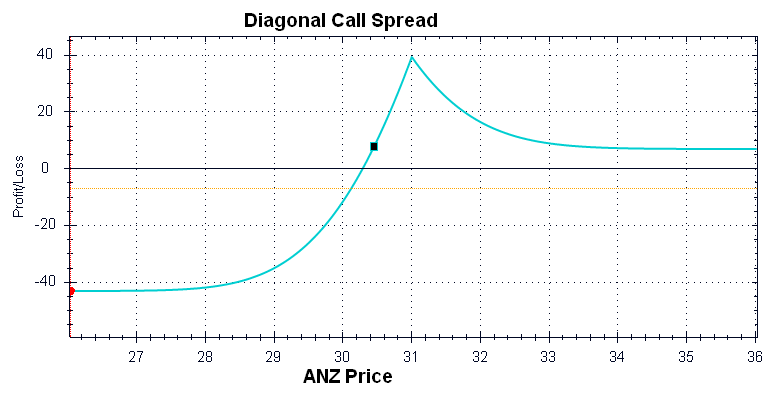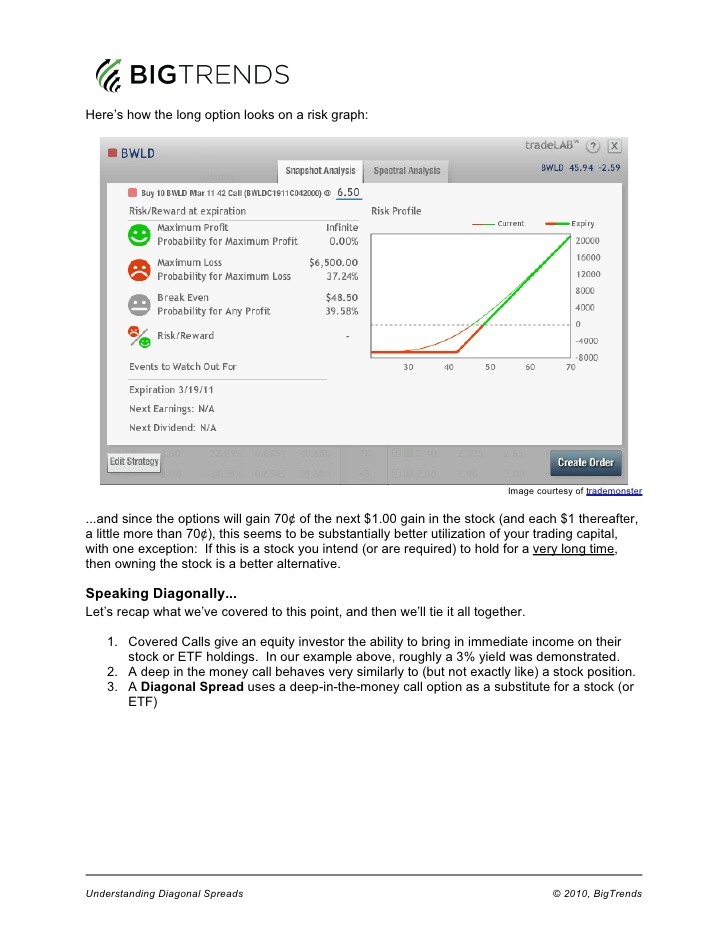How to Trade Diagonal Option Spreads
Post on: 25 Июнь, 2015 No Comment

The diagonal option spread offers a great compromise between the vertical spread and the horizontal spread. It incorporates the best features of each while avoiding some of the drawbacks of each.
Let’s briefly review the vertical and horizontal spreads including the shortcomings of each. For the discussion here, we will consider only debit spreads.
VERTICAL SPREAD — You buy a Call (Put) that has a delta of magnitude .45 to .65. Then you sell a Call (Put) with a higher (lower) strike price. Both Calls (Puts) will have the same expiration date. Ideally, you want the sale price of the short option to lower the cost of the long option by at least 30%.
The Vertical Spread achieves its maximum return at expiration when the price of the underlying stock has moved beyond the strike price of the short option.
Shortcomings of the Vertical Spread. Must wait until the expiration of both options to achieve the best profit. Profit is limited to the difference between the two strike prices less the net cost of the spread.
HORIZONTAL SPREAD (also called a calendar spread or time spread) You buy a Call (Put) with a strike price that is near the current stock price. The expiration date of the long Call (Put) is typically 4-8 weeks in the future. Then you sell a Call (Put) with the same strike price and a closer expiration date. Ideally, you want the sale price of the short option to lower the cost basis by at least 30%.

The Horizontal Spread achieves its maximum return if the stock price is very near the common strike price when the short Call (Put) expires.
Shortcomings of the Horizontal Spread. The stock price must be very near the common strike price at expiration in order to have a reasonable profit. If the stock price is even modestly removed (up or down) from the strike price, the spread is unlikely to produce a profit. Must be wary of any event (earnings report, etc) that might cause a large move in the stock price prior to the near term expiration date.
DIAGONAL SPREADS The compromise between the Vertical Spread and the Horizontal Spread. You buy a Call (Put) that has a delta of magnitude .45 to .65. Then you sell a Call (Put) with a higher (lower) strike price that has a closer expiration date.
The Diagonal Spread has the advantage of directional movement offered by the Vertical Spread, while also providing the relatively quick expiration of the short option offered by the Horizontal Spread. If weekly options are available, there is substantial flexibility in selecting the time frame over which the trade can be maintained.














